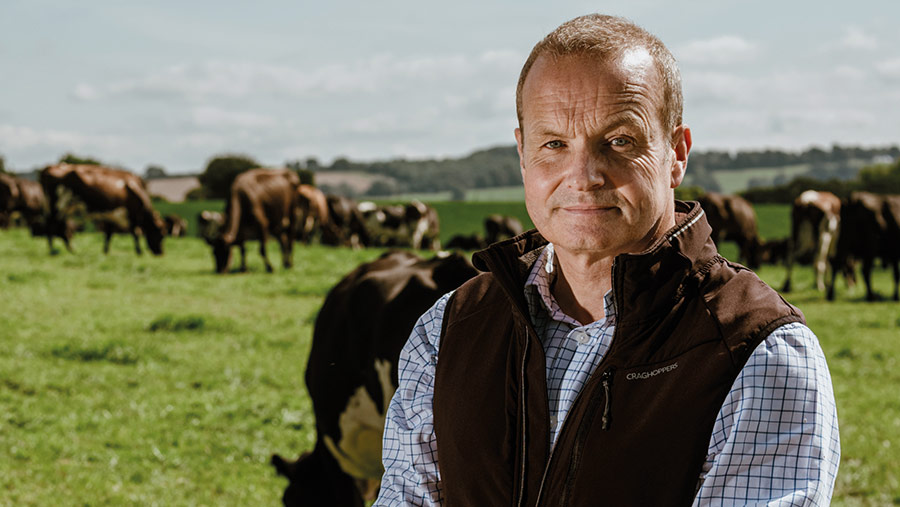Mastitis control key for dairy herds as cost inflation bites
 Ian Ohnstad © MAG/Colin Miller
Ian Ohnstad © MAG/Colin Miller Dairy farmers will need to focus on becoming more efficient, especially with the control of mastitis, as feed and fertiliser prices soar, farm subsidies are cut and milk price rises do not keep up with inflation.
Milking efficiencies will be key for farmers to stay ahead of this cost-price squeeze and become more sustainable.
This is because good mastitis control will lead to less milk being discarded and more sold, says dairy milking expert Ian Ohnstad.
His work with more than 100 clients around the world, ensuring milking systems work more efficiently and so cut mastitis losses, helped him win the 2021 Farmers Weekly Livestock Adviser of the Year award.
“Good milk harvesting is key to improve efficiency and sustainability, as you are getting more from the same resources,” he says.
See also: Farmers Weekly Awards 2021: Livestock Adviser of the Year
Good milking routine
It is important to milk efficiently by ensuring the correct machinery aspects such as vacuum pressure and pulsation rates, as is achieving the best milking routine to keep mastitis levels low in high-yielding cow herds.
“Every litre of milk needs to be saleable and not discarded, which will help with sustainability and becoming as efficient as physically possible,” he says.
Mastitis in the dairy herd costs on average £220 a case, and if individual cows have multiple mastitis cases across a lactation, the costs soon add up.
Mr Ohnstad says the starting point to reducing mastitis is to keep milking cows clean and dry, with a clear focus on bedding and a move to hygienic and dry sand cubicles.
Increasing the space around the animals when housed is also very important.
Antibiotics use
Streamlining milking routines with a focus on the pre-milking process of teat sprays and wiping with individual small towels is key, as well as not immediately treating early, mild stages of mastitis with antibiotics.
He points out it is often easier to achieve consistent milking routines in rotary milking parlours rather than in herringbones, as the herdsperson has to move much less and can focus on one particular operation.
Many of Mr Ohnstad’s clients have steadily reduced mastitis to low levels by following some of his initial guidance, but once the “low-hanging fruit” has been picked, it is easy to switch the attention to other pressing matters.
“Doing a very good job with mastitis takes time and energy, and it is then the very small details that will make the marginal gains,” he says.
But it is these marginal gain that will become more and more important as overall profit margins come under pressure.
Culling policy
Dairy farmers can be reluctant to cull when it involves a high-yielding cow, but Mr Ohnstad argues that highly contagious cows need to be taken out of the herd to stop infecting others.
This can be a very tough decision if the herd is being expanded or if culling for bovine TB and Johne’s disease is already cutting the size of the herd and minimising the farm’s milk production.
Mr Ohnstad’s experience and knowledge comes from 18 years working for The Dairy Group consultancy, where he is a director, and before that for 14 years at Adas.
He leads his consultancy group’s team of milking technology specialists, giving independent advice on parlour operation, hygienic milk production and building design, as well as mastitis control.
He has dairy clients from Aberdeenshire down to Cornwall and, as an internationally recognised specialist in milking technology, provides consultancy in the US, Australia, Africa, New Zealand, the Middle East and Japan, as well as throughout Europe.
Farmer Weekly 2022 Awards

Join Farmers Weekly in celebrating the farming industry and recognising the hard work of UK farmers at farming’s biggest night out – book your table today.
For more information about the 2022 Farmers Weekly Awards, visit the Farmers Weekly Awards website.
